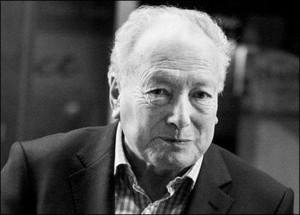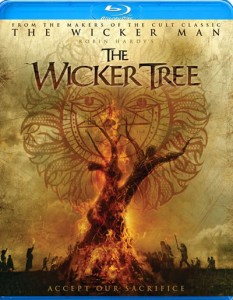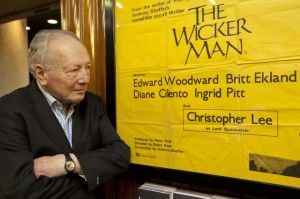 Robin Hardy is probably best known for his directing of the classic 1973 film “The Wicker Man”. Robin is back directing and is set to release the second film in the Wicker series titled “The Wicker Tree”. Media Mikes was very fortunate to be able to talk with Robin recently about the film.
Robin Hardy is probably best known for his directing of the classic 1973 film “The Wicker Man”. Robin is back directing and is set to release the second film in the Wicker series titled “The Wicker Tree”. Media Mikes was very fortunate to be able to talk with Robin recently about the film.
Adam Lawton: Can you tell us about your return to directed?
Robin Hardy: Over the years I have been directing everything from documentaries to television commercials. I think I have made over 1000 commercials and have been very successful with those. Directing is something that I really enjoy doing. Having been trained as an artist I am able to illustrate everything I want. As a writer I like to introduce music whenever I can. I suppose that comes from commercials. Music is such an important part for those. These things have tended to blend leading me to use them in the features I have made.
AL: What was it like returning to the Wicker series some 40 years after the first one being made?
RH: It was good. I even had some actors in the  new film who were in the first one. The little girl who is watching the beetle go around and around the nail in the first film reappears as a cook in the new film. There are some others who returned as well. It was really fun returning to the genre. To revive this genre is what really drew me to this project. It was great fun working on the songs.
new film who were in the first one. The little girl who is watching the beetle go around and around the nail in the first film reappears as a cook in the new film. There are some others who returned as well. It was really fun returning to the genre. To revive this genre is what really drew me to this project. It was great fun working on the songs.
AL: What do you think is the biggest difference between the two films?
RH: In many ways I don’t think they differ all that much. I think the second movie brings in some relative sub-plots that were not used in the first film. The question of being able to enlarge on the idea of the Sun as an object of worship turns up in this second film. I liked doing this in the second film because it brings the whole idea of the current state of religion down to us as a more understandable present day interest or preoccupation. In the first film there were a lot of pagan clues which were ultimately leading a Christian man to his death.
AL: How do you think your book “Cowboy’s for Christ” compares to the film?
RH: I think it’s pretty faithful to it. I made a much bigger deal of the police. It seemed to me when I read the book that in order to keep the sense of disbelief in the whole story and to believe in the police man was getting quite close to understanding what was going on we had to expand on that. This had to be the tail to the film because it was too much of a red hearing and it would have spoiled the flair of the story.
AL: Can you tell us about Christopher Lee’s involvement in the film?
 RH: In the case of the first film we were all Hammer film fans. We thought that the Hammer films all though tongue and cheek in their way didn’t begin to do justice to the whole pagan background. We thought it would be a wonderful idea to take someone who was an icon of those films and turn the whole story on its head by making this guy the pagan lord.
RH: In the case of the first film we were all Hammer film fans. We thought that the Hammer films all though tongue and cheek in their way didn’t begin to do justice to the whole pagan background. We thought it would be a wonderful idea to take someone who was an icon of those films and turn the whole story on its head by making this guy the pagan lord.
AL: Can you tell us about your work on the third film in the series “The Wrath of Gods”?
RH: I wanted to make that film in Iceland because I thought it would be sort of fun to try and make this sort of saga theme park in Iceland. I couldn’t raise the money to make the film there because of the terrible economic shape that the country is in. I chose to shoot in the Shetland Island because originally they were Scandinavian. It was perfectly logical to set this saga there. They also have a most wonderful Fire festival there which is featured in the film. I would like to think this film will be out within the next four years.

